I think fashion history is really fascinating. I love learning about the mavericks who changed the fashion industry and designers who have influenced contemporary fashion. I wanted to share with you who I think are the 12 most influential designers of the 20th century (well, one is from the 19th).
Charles Worth revolutionized fashion when he opened his dressmaking establishment in Paris in 1858. He was the first designer to put labels in his clothing. At that time, it was customary for the client to dictate the design of a dress. Instead, Worth had fashion shows four times a year. The client would pick a look and a fabric, and the dress would be sewn and tailored for their figure. Many rich patrons and royalty became clients and travelled to Paris from as far away as New York to buy his clothes. The actresses Sarah Bernhardt and Lillie Langtry were clients of The House of Worth.
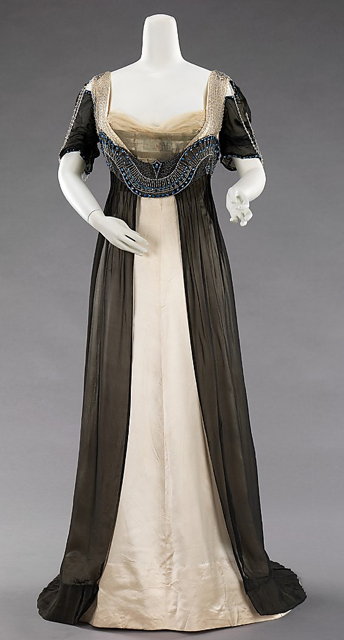
The House of Worth, 1909
The Metropolitan Museum of Art Costume Institute
Paul Poiret was a very famous couturier in the early days of the 20th century. He worked for the House of Worth but didn’t like the simple, practical style it featured, so he went out on his own in 1903. Poiret was a multi-faceted designer; he created a perfume and was an interior designer as well as a fashion designer. His designs were artistic, embracing Eastern details and wild embellishments. His harem pants were very favored, and he was one of the first designers whose looks didn’t require petticoats and corsets. Poiret was not one to change with the times though. His lavish clothes weren’t popular in the austere times of WWI, and he fell out of favor.
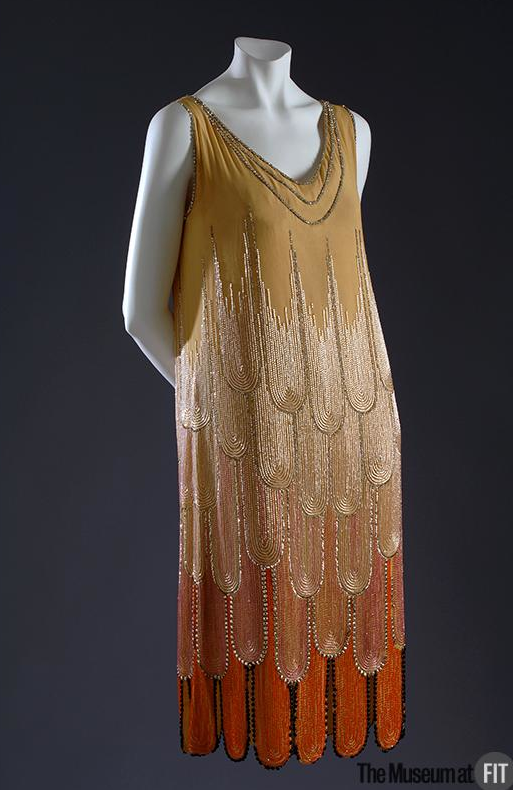
Paul Poiret, 1926
Gabrielle “Coco” Chanel. The most famous fashion figure in history was an orphan and brought up in a convent. She quickly learned the ways of the world though and got a lover to finance a millinery (hat) store for her. In 1919, she opened her store in Paris (still in the same location today!). Chanel designed what she wanted to wear: simple, elegant clothes in black and neutral colors. She is the designer who gave us the Little Black Dress (LBD) that we all know and love. When Paul Poiret passed by Chanel in the street wearing a black dress, he asked her, “Who are you mourning for?” She, in an eerie foreshadowing of his downfall, replied, “For you Monsieur.” I love Chanel’s quotes. Two of my favorites are: “Fashion fades, style is eternal” and “a girl should be two things – classy and fabulous.”
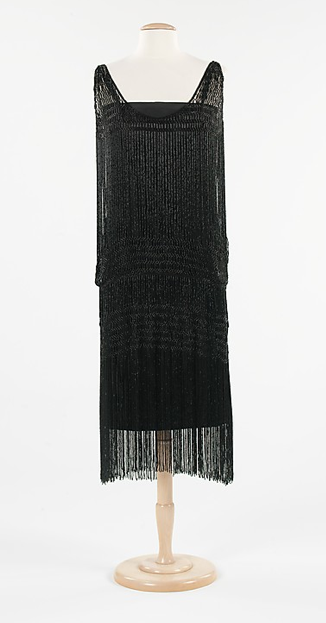
Chanel, 1924-1926
The Metropolitan Museum of Art Costume Institute
Madeleine Vionnet opened her couture house in 1912 in Paris. She created some of the most beautiful dresses ever made because of her unusual technique. She created her lingerie-inspired designs on a mannequin, rather than on paper, so she could see how the farbic moved as she made a dress. Also, Vionnet was the first to cut her fabric on the bias (by turning the fabric diagonal and cutting, rather than horizontal). Cutting on the bias created a dress that hugged a woman’s curves and moved with her. The dress below was created in 1938. Except for the neckline, the wedding dress that Carolyn Bessette wore almost 60 years later is quite similar. Since the death of Vionnet in 1975, the line has been bought and sold several times. It is now owned by an Italian company and the collection is sold at Barney’s, Saks and other major luxury retailers. Cameron Diaz, Natalie Portman, Madonna and Emily Watson wear Vionnet.
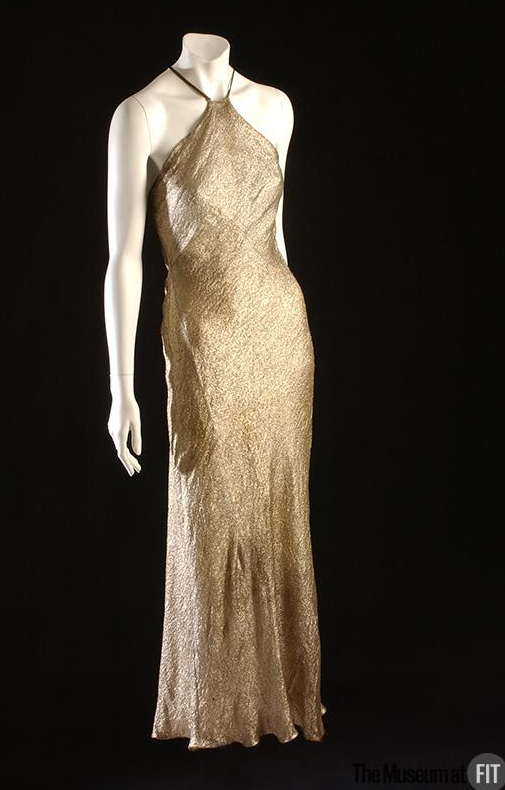
Vionnet, 1938
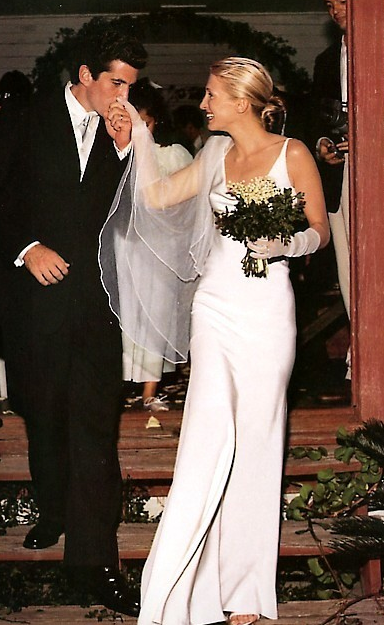
Carolyn Bessette at her wedding to John F. Kennedy Jr.
Madame Alix Grès studied as a sculptor and was able to use that talent to create the architectural Grecian columns of pleats that she became known for. What I love about her designs is that they are also so timeless. The dress below was designed 75 years ago, and it would still look fabulous on a red carpet today. Grace Kelly, Greta Garbo and Marlene Dietrich wore Madame Grès dresses.
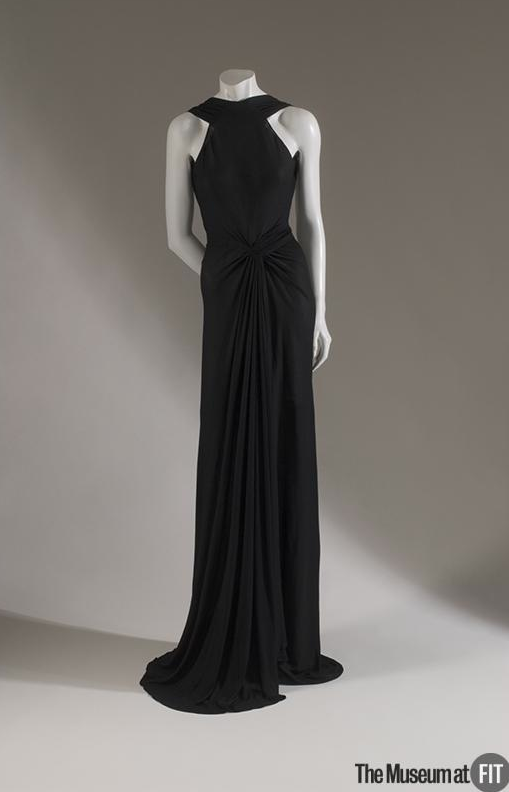
Madame Gres, 1938
Elsa Schiaparelli was quite a unique designer, known for her whimsical clothing. She was the first designer to integrate art into clothes and to treat clothes as art. During the height of her work in the 30s, Schiaparelli collaborated with the Surrealist painters, including Salvador Dali (on the shoe hat below) and Jean Cocteau. She was the first to show seasonal collections created around a theme such as the circus, butterflies and music. Mae West was a huge fan of Schiaparelli’s clothes.
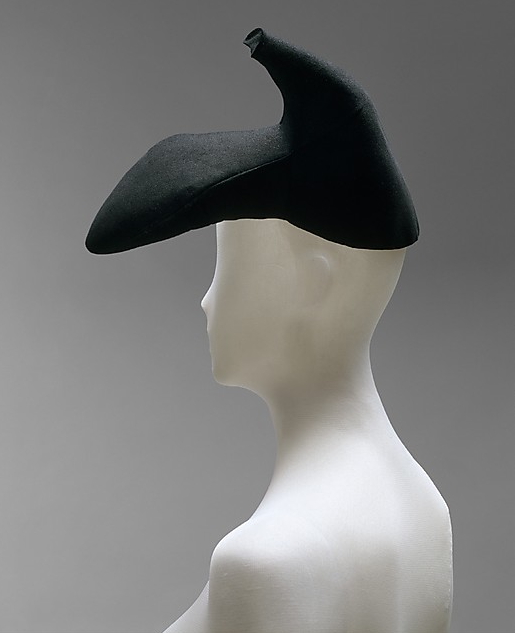
Elsa Schiaperelli, 1937-1938
The Metropolitan Museum of Art Costume Institute
Claire McCardell is the mother of American sportswear, a casual approach to dressing that designers such as Tommy Hilfiger and Ralph Lauren embody today. From the 1930s to the 1950s, she designed mass-produced affordable and stylish women’s sportswear that rejected the formality of French couture. During World War II, Lord & Taylor promoted an “American Look” campaign to offset France’s crippled fashion industry, and McCardell’s designs that embraced comfort, functionality and everyday fabrics were best sellers. In 1990, Life magazine named her one of the 100 most important Americans of the twentieth century.
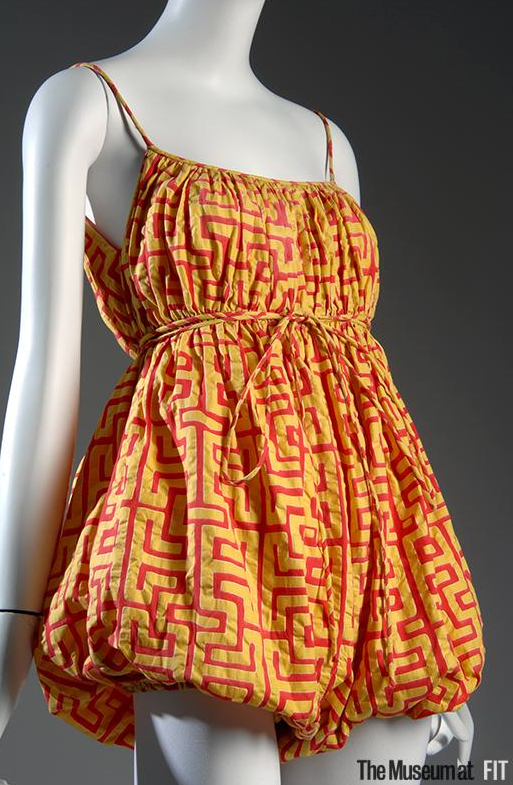
Claire McCardell, 1952-1953
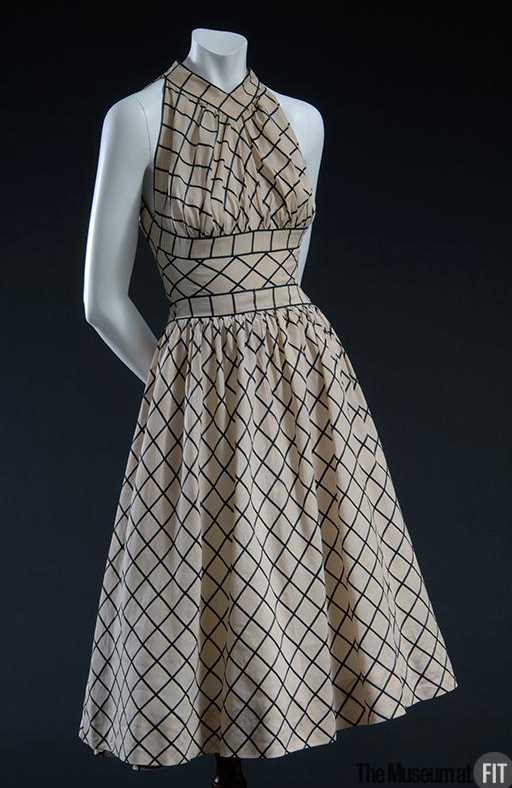
Claire McCardell, 1954
Christian Dior began his fashion house in Paris in 1946, and his first collection changed the way the world looked at fashion. Carmel Snow, the editor of Harper’s Bazaar at the time, dubbed the collection “The New Look” because the tight bodice and full skirt was something no one had seen before. It was a huge success after the austerity of World War II, and the look was popular well into the 50s (Grace Kelley and Audrey Hepburn often wore this look in their films). Rita Hayworth and Ava Gardner were fans of his work. Dior died of a heart attack in 1957, but luckily a young designer who worked for him, Yves Saint Laurent, continued to create beautiful collections for the house until he set out on his own.
Raf Simons, the new designer of Christian Dior, went back to the famous first collection of 65 years ago for his inspiration and showed peplum jackets with shorts and and dresses with full skirts for the spring 2013 collection (see photo below)
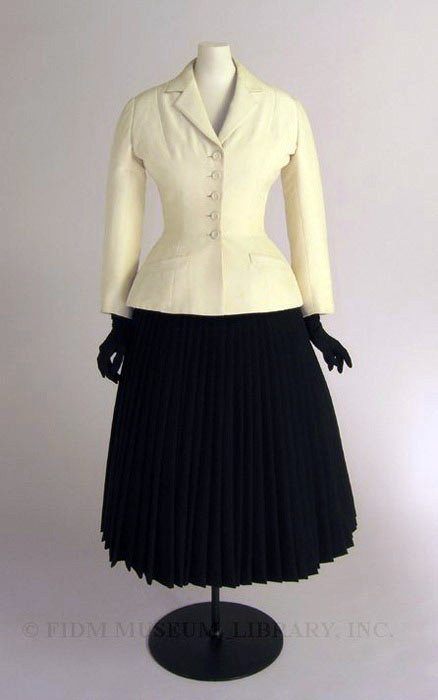
Christian Dior, 1947
Fashion Institute of Design and Merchandising Museum
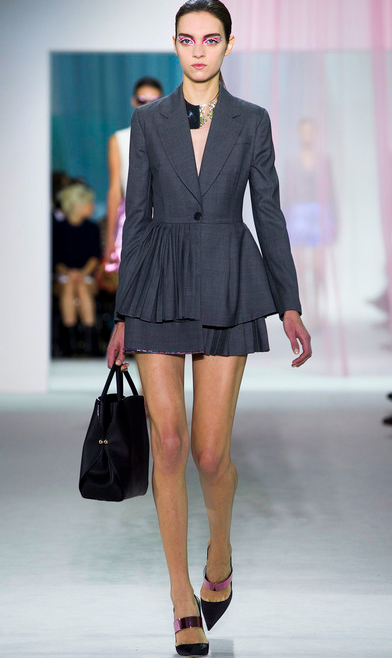
Christian Dior, spring 2013
Main Rousseau Bocher, better known as Mainbocher, was the first American to achieve success as a Parisian couturier when he opened his salon in 1930. He created garments that were elegant, conservative and practical, although he did create the strapless evening gown. Mainbocher dressed some of the most influential women of his time, including Ethel Merman, Rosalind Russell and Babe Paley. He also dressed Wallis Simpson, for whom the Duke of Windsor gave up the British throne. (If you don’t know the story, google it. It’s a fascinating story of love, betrayal and sacrifice!!!) He created Simpson’s wedding dress in a light blue color that has become known as “Wallis blue.”

Mainbocher, 1937
The Metropolitan Museum of Art Costume Institute
Yves Saint Laurent was one of the greatest designers in fashion history. He was a modern designer who conceptualized men’s clothing, like the tuxedo and the safari jacket, into chic womenswear (although the safari look didn’t take off with the masses until the film Out of Africa came out in 1985). He also had a knack for creating beautiful color combinations. As Schiaparelli did before him, YSL incorporated art into his designs (Mondrian and Picasso). He was one of the first designers to socialize with his clients (including Catherine Deneuve and Loulou de la Falaise) and use them as inspiration for his work. And, he was the first designer to use African-American models in his runway shows.
YSL retired in 1992 and died in 2008. Hedi Slimane was hired last year to design for the house (after John Galliano was fired for making racial slurs). Slimane payed homage to the original designer in his first collection for the line, Spring/Summer 2013, by designing modern versions of YSL’s signature looks, including a modern safari jacket in leather, shown below (and I really, really, really want it).
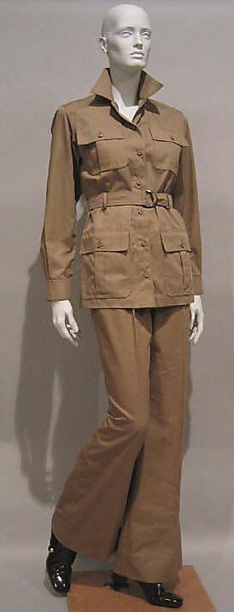
Yves Saint Laurent, 1973
The Metropolitan Museum of Art Costume Institute
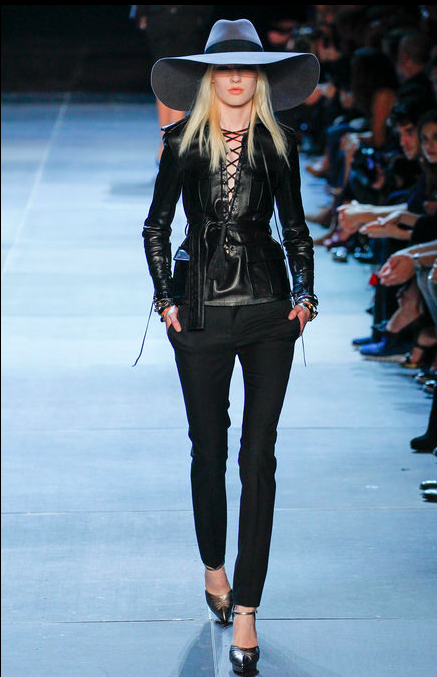
Yves Saint Laurent, spring 2013
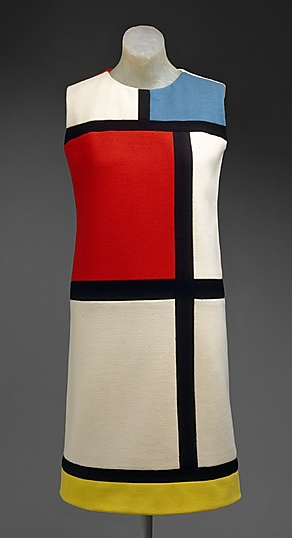
Yves Saint Laurent, 1965-1966
The Metropolitan Museum of Art Costume Institute
Mary Quant became popular in the 60s and has been credited with creating the miniskirt. She was part of the “youthquake” movement when teenagers dominated the music and fashion scene (fyi: Diana Vreeland, editor of Harper’s Bazaar, Vogue and the reinventor of The Costume Institute at the Met, coined the phrase. She’s another fascinating person in fashion). Quant is famous for saying, “Good taste is death. Vulgarity is life.” The simplicity of Quant’s designs made her extremely popular worldwide, and her clothes were even sold at J.C. Penney. She was innovative in her fabric usage as well and was the first to use plastic in fashion.
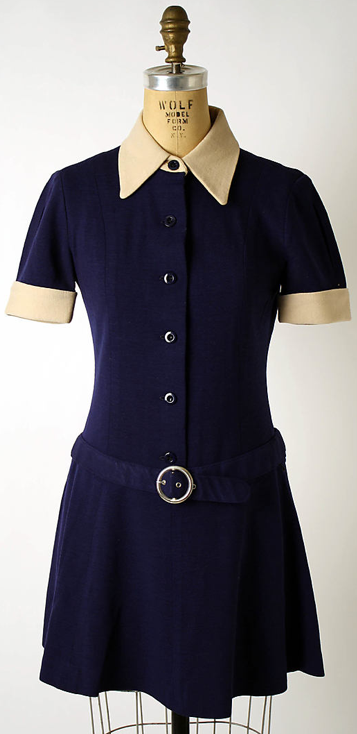
Mary Quant, 1968
The Metropolitan Museum of Art Costume Institute
Roy Halston Frowick started his career designing millinery for Bergdorf Goodman in the 50s, where he created the famous pillbox hat associated with Jacqueline Kennedy. Halston’s popularity grew quickly as did his exclusive clientele. He launched his first collection in 1962. His clothes were modern and glamorous. Halston’s fashion shows drew celebrities such as Liza Minnelli and Bianca Jagger. He designed by day and spent his nights dancing at Studio 54 with Diana Vreeland and Andy Warhol. Halston redefined American sportswear with easy fabrics in simple yet sophisticated silhouettes, and has been an influence on designers such as Michael Kors, Calvin Klein and Donna Karan. He died in 1990. The brand was revived as Halston Heritage in 2010.
Hope you enjoyed this post about the 12 most influential designers of the 20th century. It was really fun writing it. If you’re interested in learning more about fashion history, fashion in film or influential people in fashion, let me know. I’d be happy to write other posts about the subject; it’s one of my favorite topics!
xoxo
Illysia
PS-If you live near New York City and are interested in fashion history, check out the exhibition Impressionism, Fashion and Modernity at The Metropolitan Museum of Art, open until May 27, 2013. It’s amazing!


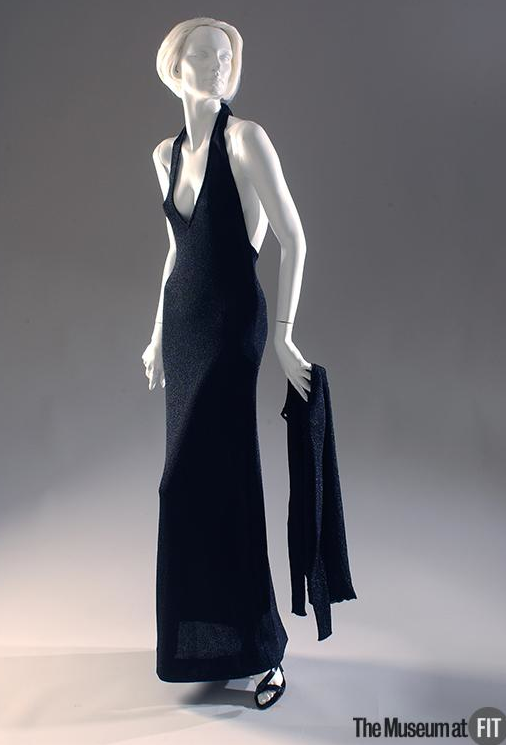
I enjoyed reading this blog post… My Favorite… Charles Frederick Worth.
Illysia
Thank you so much for this clear, concise posting and the photos. I knew the names of these great historical designers, but not much about them (other than Chanel). This was exactly what I was looking for.
So glad you liked it!!
I truly love this article! What a lesson, good design is timeless. Yes, please write more about fashion history and fashion in film and influential people in fashion. I’m going to try to visit the exhibit at the Met. Thanks, Illysia.
You’ll love it Penny!
Love the article. It is great to see how good style can last for many years – several of the pieces shown above would sell in the stores today! I wish I owned a few! Nice posts – always a treat to read!
Thanks Allison. I wish I owned a few too. I was the one who convinced my mom to get rid of her “crazy, old-fashioned” Puccis. Baaaad decision!!! Thankfully, she did keep one that I’m wearing in my profile photo.
This post is a treat, thanks for putting it together. These photos shows how relevant these designers still are today…shoe hat notwithstanding. ‘Yes’to another serving of fashion history, please.
Glad you liked it Dianne and are interested in reading more. Can’t you picture Daphne Guinness wearing the shoe hat though???